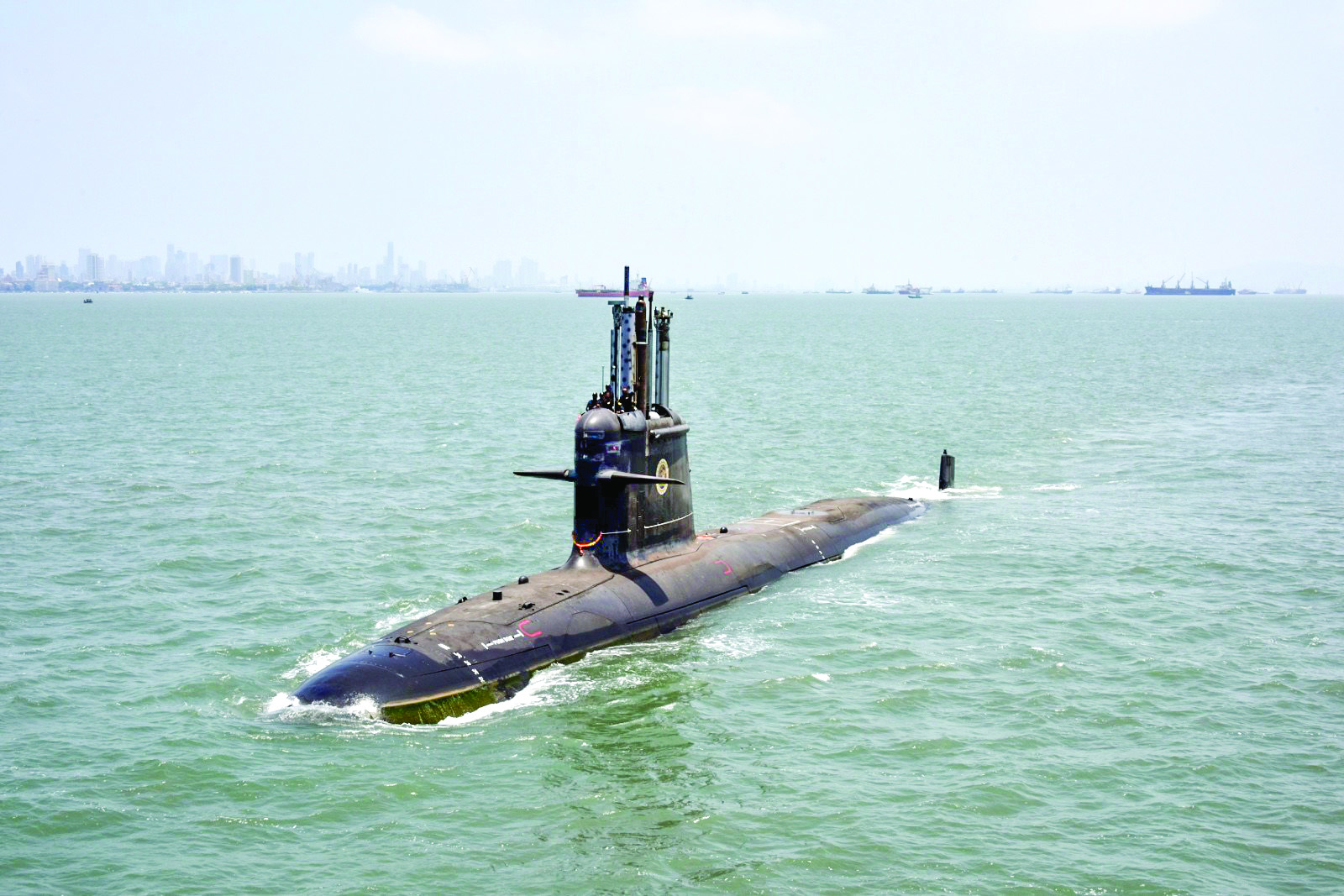The simultaneous commissioning of three advanced platforms is a testament to India’s ability to design, develop, and construct complex warships and submarines indigenously.
NEW DELHI: On 15 January 2025, India will rewrite its maritime history with an unprecedented milestone: commissioning three advanced combat platforms in a single day, an unprecedented event unparalleled in scale and significance.
The Indian Navy is set to commission three state-of-the-art combat platforms—Nilgiri, Surat, and Vagsheer—in one day, showcasing its growing maritime strength and technological self-reliance. This rare event reflects a transformative phase for India’s naval forces, highlighting its commitment to safeguarding its maritime interests and asserting its strategic autonomy.
A LANDMARK ACHIEVEMENT
The simultaneous commissioning of three advanced platforms is a testament to India’s ability to design, develop, and construct complex warships and submarines indigenously. Each platform represents a pinnacle of naval engineering, setting new benchmarks with its cutting-edge stealth technologies, advanced weapon systems, and operational versatility.
l INS Nilgiri, the lead ship of the Project 17A stealth frigates, features cutting-edge stealth capabilities, enhanced survivability, and advanced sensors.
l INS Surat, the final ship of the Project 15B stealth destroyers, incorporates upgraded weapon systems, improved air defence, and integrated communication platforms.
l INS Vagsheer, the last submarine of the Scorpene class under Project 75, is equipped with advanced sonar, torpedoes, and anti-ship missiles, with future upgrades like Air Independent Propulsion (AIP) technology.
These platforms collectively boost Indian Navy’s operational readiness, particularly in the strategically sensitive Indian Ocean Region (IOR) and beyond.
JOURNEY FROM MODESTY TO MASTERY
India’s indigenous warship-building journey began modestly with the construction of INS Ajay in 1961 by Garden Reach Shipbuilders and Engineers (GRSE). Commissioned amidst a newly independent nation’s aspirations to establish a robust naval presence, INS Ajay was a small yet significant Anti-Submarine Warfare vessel, symbolising the start of India’s self-reliance in shipbuilding.
The subsequent decades saw incremental progress, with milestones such as the Nilgiri-class frigates of the 1970s and the Delhi-class destroyers in the 1990s. However, these early efforts often relied on foreign assistance for design and systems integration.
Mazagon Dock Shipbuilders Limited (MDL) and other Defence Public Sector Undertakings (DPSUs) have significantly accelerated their capabilities in recent years. MDL alone has delivered seven Visakhapatnam-class destroyers, six Scorpene-class submarines, and one Nilgiri-class frigate over the past decade. Today’s warships are combat-ready upon delivery, a sharp contrast to earlier decades when systems often required post-delivery testing and integration.
THE STRATEGIC IMPLICATIONS
The commissioning of Nilgiri, Surat, and Vagsheer comes at a critical juncture as India faces increasing maritime challenges in the Indo-Pacific. These platforms enhance the Navy’s ability to protect sea lanes, counter potential threats, and project power across the IOR. For instance, INS Nilgiri’s stealth capabilities were recently demonstrated during joint exercises in the Indo-Pacific, showcasing its ability to evade detection and deliver decisive combat power.
In particular, Nilgiri and Surat’s stealth and multi-role capabilities strengthen surface combat operations, while Vagsheer’s advanced submarine warfare systems bolster underwater defence. Together, they represent a formidable response to the growing naval power of China and other regional actors.
INDIGENOUS EXCELLENCE AND GLOBAL COMPARISONS
The indigenisation of India’s naval capabilities aligns with the “Make in India” initiative, aimed at reducing dependence on foreign suppliers. MDL’s achievements are complemented by contributions from GRSE, Cochin Shipyard, and private players like Larsen & Toubro, who are building a variety of advanced vessels, from frigates to support ships.
While critics often point to China’s rapid shipbuilding—averaging 20 warships annually—India’s progress must be viewed in context. India’s approach emphasises sustainable growth by fostering a robust indigenous ecosystem, leveraging local expertise, and balancing quality with operational readiness, contrasting with China’s high-output, assembly-line approach driven by its commercial shipbuilding dominance.
Unlike China, which benefits from a robust commercial shipbuilding ecosystem, India has faced historical neglect in this sector. Yet, the recent focus on indigenous production, backed by government initiatives like the Maritime Development Fund (MDF), is helping India catch up at a commendable pace, demonstrating that it can produce world-class warships at reduced intervals.
ECONOMIC AND STRATEGIC RIPPLE EFFECTS
Warship construction is more than a defence capability; it indicates industrial, economic, and technological advancement. Integrating advanced metallurgy, propulsion, radar, and weaponry technologies drives innovation and supports ancillary industries. The recent surge in shipbuilding also fosters a highly skilled workforce, contributing to India’s broader economic growth.
Furthermore, the ability to build sophisticated warships domestically enhances India’s strategic autonomy. India is asserting its sovereignty in geopolitical affairs by reducing reliance on foreign nations for defence capabilities.
A DEFINING MOMENT
The commissioning of Nilgiri, Surat, and Vagsheer goes beyond an indigenous naval milestone; it is a defining moment for India’s maritime future. These platforms enhance the Navy’s ability to project power, safeguard maritime interests, and maintain stability in a region marked by rising tensions.
As the world’s eyes turn to the dockyards of Mumbai, this historic event sends a clear message: New Delhi is ready to lead in maritime security, not only as a resident power in the Indian Ocean but as a global player committed to peace, stability, and self-reliance. The Indian Navy’s future has never looked more promising, and its impact will resonate far beyond the seas it patrols.
* Ashish Singh is a senior journalist with over 17 years of experience covering defence, aerospace, foreign affairs, and politics.

